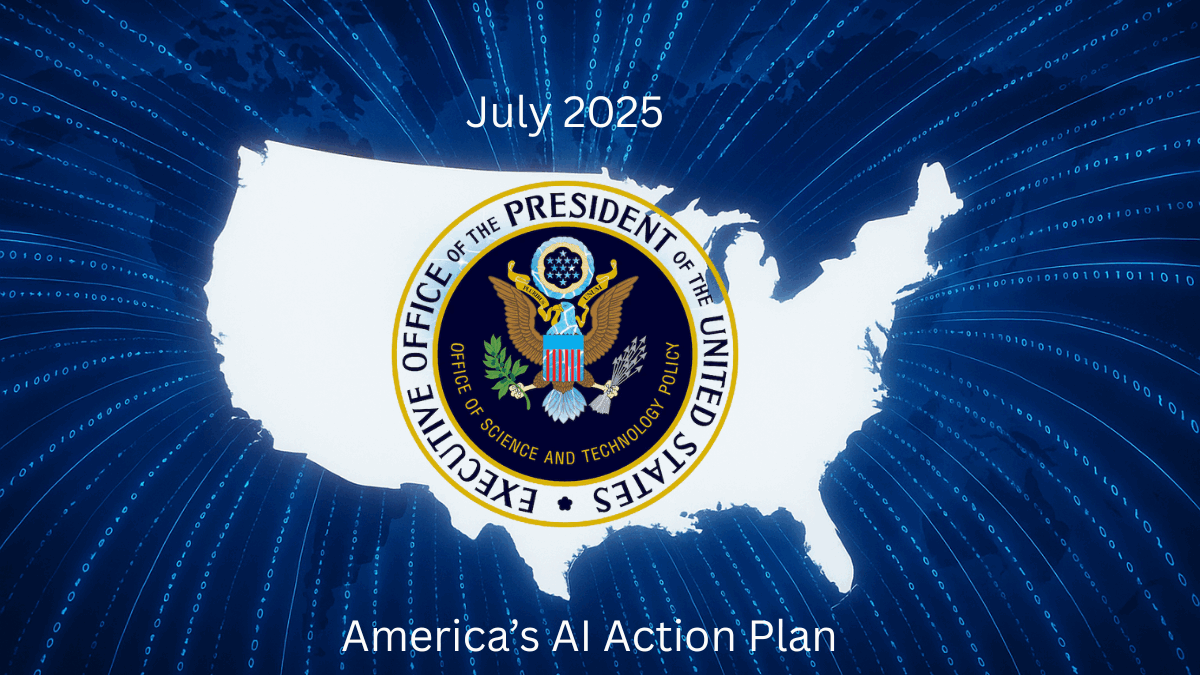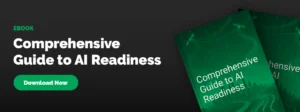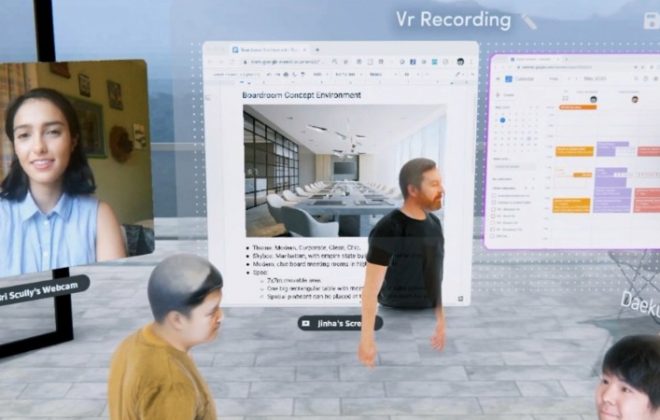America’s AI Action Plan 2025: What CEOs, CIOs, and CFOs Need to Know
There is no question, Artificial Intelligence (AI) is the defining technology race of our era and AI readiness is paramount. In July 2025, the White House unveiled America’s AI Action Plan, a comprehensive strategy to cement U.S. leadership in AI, strengthen infrastructure, and set global standards.
For business leaders, this isn’t just about policy—it’s about competitive advantage, risk management, and opportunity creation. Whether you’re a CEO charting growth strategy, a CIO driving digital transformation, or a CFO focused on return on investment, understanding this plan will help you prepare for the AI-driven economy that is unfolding faster than most realize. Macronet Services can help with your global AI strategy. Please reach out anytime for conversation about the possibilities.
The Big Picture
America’s AI Action Plan is built on three pillars:
- Accelerating AI Innovation – removing regulatory barriers, investing in workforce and open-source AI, and creating industry-specific testbeds.
- Building AI Infrastructure – scaling data centers, semiconductors, power grids, and secure digital backbones to handle explosive AI demand.
- Leading Internationally in AI Diplomacy & Security – ensuring U.S. AI becomes the global standard while protecting against foreign threats.
The message is clear: AI dominance is viewed as a matter of national security, economic prosperity, and industrial leadership. For the private sector, that translates into new incentives, streamlined regulations, and an acceleration of public-private partnerships.
Pillar I: Accelerating AI Innovation
The first pillar removes friction points for innovation while ensuring U.S. companies have the resources to lead.
Key Takeaways for Business Leaders:
- Deregulation to Speed Innovation
The plan rescinds prior AI regulations viewed as restrictive, replacing them with a “pro-innovation” stance. For companies, this means fewer bureaucratic hurdles and a clearer path to deploying new AI solutions in regulated industries like healthcare, finance, and manufacturing.
Example: A healthcare startup could test AI diagnostic tools in a regulatory “sandbox,” sharing results with the FDA while still accelerating deployment. - Open-Source and Open-Weight AI
The plan emphasizes support for open AI models—making them accessible for startups, researchers, and enterprises concerned about proprietary vendor lock-in.
Example: A mid-market manufacturer could adopt open-weight AI models for supply chain optimization without exposing proprietary data to a hyperscaler. - AI Centers of Excellence
Domain-specific hubs will be established (in healthcare, agriculture, and energy), giving businesses a chance to collaborate with academia and government.
Example: A regional energy provider could test AI-driven grid management tools in a federally supported sandbox before making multi-million-dollar infrastructure commitments. - Workforce Transformation
Significant investments are planned in AI literacy, retraining displaced workers, and scaling apprenticeship programs. For executives, this signals that a pipeline of AI-skilled labor will grow, but it also reinforces the need for internal workforce strategies.
Pillar II: Building AI Infrastructure
AI doesn’t run on ideas alone—it requires chips, data centers, energy, and Tier 1 networks on a massive scale. The plan acknowledges this by focusing heavily on physical and digital infrastructure.
Key Takeaways for Business Leaders:
- Streamlined Permitting for Data Centers and Energy
Federal permitting for data centers, semiconductor fabs, and energy projects will be fast-tracked.
Example: Enterprises investing in private cloud or high-performance computing facilities may find it easier to secure federal approvals and energy partnerships. - Revitalizing Semiconductor Manufacturing
The U.S. will double down on domestic semiconductor production to avoid reliance on foreign suppliers.
Example: AI hardware supply chains—currently dominated by Asia—could shift, opening opportunities for U.S.-based firms in chip design, testing, and advanced packaging. - Grid Expansion for AI Demand
Data centers already consume as much electricity as some mid-sized nations. The plan proposes grid upgrades and advanced energy solutions like small modular nuclear reactors.
CFO Insight: Expect long-term electricity pricing volatility. Enterprises with energy-intensive AI strategies (think autonomous logistics, generative design, or real-time trading platforms) will need to consider energy hedging and on-site renewable investments. - Cybersecurity & Incident Response
With AI enhancing both cyber offense and defense, the plan prioritizes AI-augmented cybersecurity across the entire network including AIoT.
Example: A financial services CIO could leverage federally backed AI threat intelligence from the proposed AI-ISAC (Information Sharing and Analysis Center) to protect real-time payment systems.
What Pillar II of the AI Action Plan Means for CIOs: Technical Considerations
While CEOs and CFOs focus on strategy and capital allocation, CIOs will be on the frontlines of translating policy into technical execution. The Action Plan outlines multiple areas where IT leaders must act decisively:
Data Infrastructure Modernization
Implication: With new regulatory sandboxes and domain-specific Centers of Excellence, CIOs will need scalable data pipelines to support federated learning, synthetic data generation, and cross-agency data sharing.
Action: Invest in data mesh architectures and federated governance frameworks that align with NIST’s evolving AI evaluation guidelines.
Compute Strategy & Cloud Alignment
Implication: The plan’s push for domestic semiconductor manufacturing and streamlined permitting will accelerate AI-specialized compute availability. CIOs must prepare for multi-cloud or hybrid models optimized for AI accelerators (GPUs, TPUs, NPUs).
Action: Develop a cloud-agnostic AI deployment strategy that includes burst capacity agreements with hyperscalers while exploring on-prem AI clusters for sensitive workloads.
AI Model Integration & Lifecycle Management
Implication: The emphasis on open-source and open-weight models gives enterprises flexibility but increases governance complexity.
Action: Implement AI model lifecycle management (ML Ops + Governance) that tracks training data lineage, bias mitigation, and regulatory compliance across open and proprietary models.
Cybersecurity & Secure-by-Design AI
Implication: The plan calls for “secure-by-design” AI systems, incident response frameworks, and AI-specific ISACs. CIOs must adapt traditional cyber practices for AI.
Action: Extend Zero Trust to AI pipelines—covering model inputs/outputs, fine-tuning processes, and adversarial resilience testing. Run red-teaming exercises on frontier models before production deployment.
Talent & Workforce Implications
Implication: CIOs will be tasked with reskilling existing IT teams to manage new AI infrastructure.
Action: Prioritize AIOps training, MLOps certifications, and federated data management skills. Integrate AI-specific KPIs into IT staff performance frameworks.
Pillar III: International Leadership & Security
AI is as much about geopolitics as it is about business. The plan explicitly frames AI leadership as a way to counter China’s growing influence.
Key Takeaways for Business Leaders:
- Exporting U.S. AI Standards
U.S.-based companies will benefit if American-developed AI standards become the global benchmark. This creates a unified market instead of fragmented regional standards.
Example: A biotech firm using U.S.-approved AI models could seamlessly expand into Europe and Asia if allies adopt American technical standards. - Tightened Export Controls
Restrictions on AI chips, software, and models aim to prevent U.S. innovation from empowering rivals. This may impact global supply chains, particularly for companies with operations in Asia or the Middle East. - Biosecurity Safeguards
The plan highlights preventing AI misuse in synthetic biology. For pharmaceutical and life sciences leaders, this signals both risk mitigation and potential new compliance obligations.
Business Opportunities & Risks
Opportunities
- First-Mover Advantage – Regulatory sandboxes and open compute access allow enterprises to deploy AI faster.
- Infrastructure Expansion – Investment in data centers and semiconductors lowers barriers for companies scaling AI operations.
- Workforce Access – Federal investment in retraining and AI literacy means a growing pool of skilled talent.
- Global Market Alignment – If U.S. standards dominate, global expansion for AI-enabled businesses becomes easier.
Risks
- Ethical and Reputational Scrutiny – The “neutrality” mandate may face backlash, requiring companies to self-regulate fairness and transparency.
- Environmental Pushback – Loosened permitting could spark public opposition, affecting brand reputation.
- Geopolitical Complexity – Export controls and supply chain restrictions could complicate multinational operations.
- Regulatory Patchwork – Federal preemption of state AI laws could create friction between local compliance and federal incentives.
What Should CEOs, CIOs, and CFOs Do Next?
- CEOs should assess strategic partnerships—joining AI Centers of Excellence or federal testbeds can secure early access to cutting-edge research and infrastructure.
- CIOs should prioritize AI integration roadmaps, leveraging deregulation and federal sandboxes to accelerate deployments in areas like cybersecurity, analytics, and automation.
- CFOs should revisit capital allocation strategies, factoring in infrastructure cost shifts, energy dependencies, and federal incentives for AI innovation.
Final Thought
America’s AI Action Plan is more than policy—it’s a blueprint for the next industrial revolution. It represents an unprecedented fusion of government backing and private-sector innovation, with trillions in potential market impact.
For enterprises, the question is not whether AI will reshape your industry—it already is. The real question is: are you positioning your organization to take advantage of the infrastructure, innovation, and global leadership initiatives this plan sets in motion?
At Macronet Services, we help leaders navigate these changes—aligning enterprise AI strategies with business outcomes, infrastructure realities, and evolving global standards.
Frequently Asked Questions (FAQs) about America’s AI Action Plan
- What is America’s AI Action Plan and where can I find the link to America’s AI Action Plan?
America’s AI Action Plan is a comprehensive federal strategy launched in July 2025 to make the U.S. the world leader in artificial intelligence. It focuses on accelerating innovation, building AI infrastructure, and leading in international AI diplomacy and security. The link to the PDF can be found here: America’s AI Action Plan
- Why does the U.S. consider AI a national security priority?
AI is seen as critical to both economic competitiveness and defense readiness. The plan frames AI dominance as essential to counter foreign rivals, particularly China, and to ensure American companies set global standards in AI technologies.
- How will the AI Action Plan affect U.S. businesses?
Companies can expect fewer regulatory barriers, access to federal AI testbeds, more open-source models, and expanded infrastructure support for data centers, semiconductors, and grid capacity. For many industries, this means faster AI adoption and lower deployment risks.
- Which industries will benefit most from the AI Action Plan?
Key industries include healthcare, energy, manufacturing, agriculture, defense, and financial services. The plan specifically calls for sector-focused AI Centers of Excellence, regulatory sandboxes, and standards designed to accelerate adoption in these high-impact areas.
- How does the plan address AI workforce challenges?
The plan invests in AI literacy, technical training, and rapid retraining programs. Employers may also receive tax advantages for providing AI-related education. For executives, this means a growing pipeline of AI-skilled talent to fill future workforce gaps.
- Will there be new funding opportunities for AI startups?
Yes. The plan supports open-source AI development and aims to increase access to computing power for startups through public-private partnerships and financial markets for compute. This lowers barriers for smaller firms to compete with hyperscalers.
- How does the AI Action Plan address infrastructure needs?
The strategy includes fast-tracked permitting for data centers and energy projects, incentives for domestic semiconductor production, and federal investment in high-security AI data centers for sensitive workloads. This will reduce bottlenecks for companies scaling AI at enterprise levels.
- What role does international diplomacy play in the AI Action Plan?
The U.S. will promote American AI systems and standards globally, expand export controls to prevent adversaries from accessing advanced AI, and strengthen alliances to counter Chinese influence in AI governance bodies. For multinationals, this could create a more predictable standards environment.
- Are there risks for companies under the AI Action Plan?
Yes. Risks include public backlash over deregulation, potential environmental scrutiny tied to energy-intensive AI infrastructure, and compliance complexity as federal policy preempts certain state-level AI laws. Businesses will need strong ethics, governance, and sustainability strategies to manage these risks.
- How should executives prepare for the AI Action Plan?
- CEOs should explore partnerships with AI Centers of Excellence and align corporate strategy with federal initiatives.
- CIOs should develop AI adoption roadmaps leveraging sandboxes and open models.
- CFOs should plan for capital allocation shifts tied to infrastructure, energy, and workforce investments.
The overarching message: early movers will gain significant competitive advantage.
Related Posts
Recent Posts
- The Complete Oracle FastConnect Guide: Architecture, Routing, Security, and Enterprise Connectivity Design
- Telecom Expense Management (TEM): The Definitive Guide for Mid-Large Enterprises
- Designing Secure and Compliant Networks in China: The Definitive Guide for Global Enterprises
- Securing Autonomous AI Agents: Identity-Anchored Autonomy for Enterprise Risk & Resilience
- The Definitive Guide to Enterprise Telecom Agreements: MSA, SLA, and DIA Negotiation Best Practices for Global Carriers
Archives
- December 2025
- October 2025
- September 2025
- August 2025
- July 2025
- June 2025
- May 2025
- April 2025
- March 2025
- February 2025
- January 2025
- December 2024
- November 2024
- October 2024
- September 2024
- August 2024
- July 2024
- June 2024
- May 2024
- April 2024
- March 2024
- February 2024
- January 2024
- December 2023
- November 2023
- October 2023
- September 2023
- August 2023
- July 2023
- June 2023
- May 2023
- April 2023
- March 2023
- February 2023
- January 2023
- December 2022
- November 2022
- October 2022
- September 2022
- August 2022
- July 2022
- June 2022
- May 2022
- April 2022
- March 2022
- February 2022
- January 2022
- December 2021
- November 2021
- October 2021
- September 2021
- August 2021
- July 2021
- June 2021
- May 2021
- April 2021
- March 2021
- December 2020
- September 2020
- August 2020
- July 2020
- June 2020
Categories
- Clients (12)
- Telecom Expense Management (1)
- Satellite (1)
- Artificial Intelligence (9)
- Travel (1)
- Sports (1)
- Music (1)
- News (282)
- Design (4)
- Uncategorized (1)
- All (19)
- Tips & tricks (25)
- Inspiration (9)
- Client story (1)
- Unified Communications (196)
- Wide Area Network (309)
- Cloud SaaS (60)
- Security Services (71)





